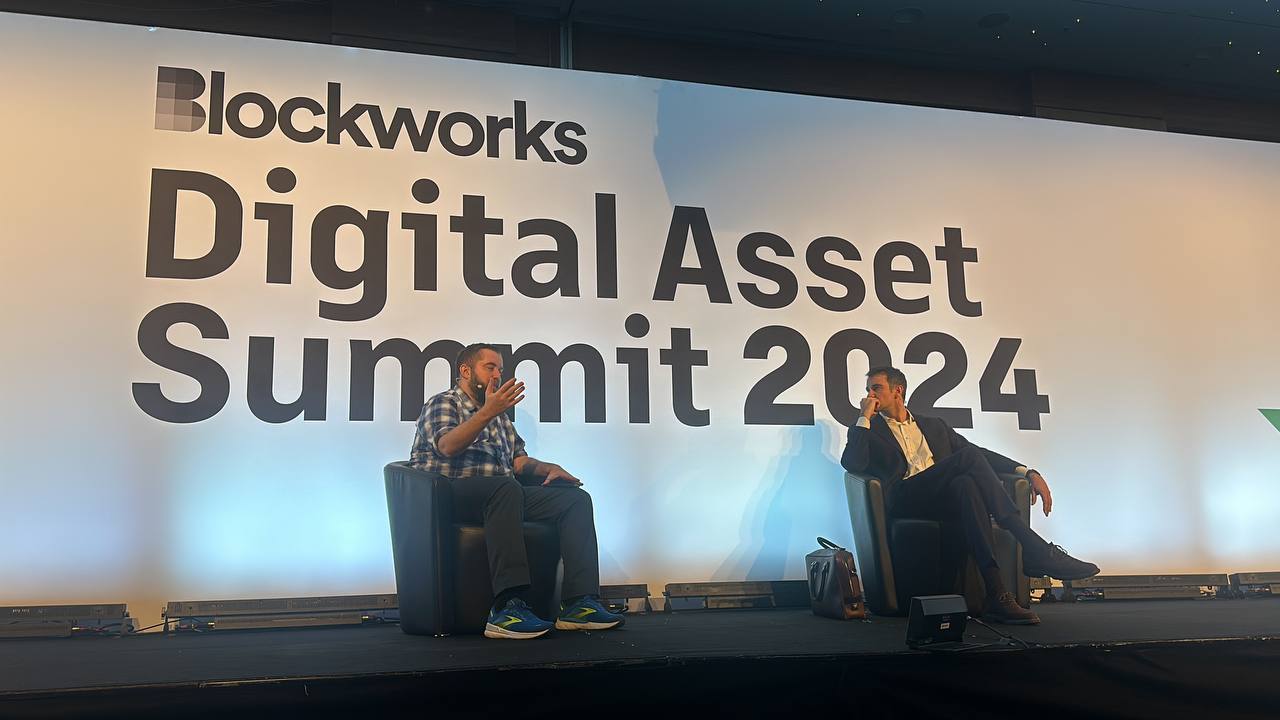This week at Blockworks Digital Asset Summit in London, Chainlink co-founder Sergey Nazarov joined Michele Curtoni, Head of Strategy and New Business at SIX Digital Exchange (SDX), to explore the future of digital assets onchain.
SDX is a fully regulated financial market infrastructure (FMI) built on blockchain technology and one of a dozen major financial institutions and FMIs that collaborated with Swift to demonstrate how Chainlink’s Cross-Chain Interoperability Protocol (CCIP) allows banks to transact with a range of private and public blockchains using their existing infrastructure.
By allowing digital assets to flow freely between private bank chains and public DeFi applications, CCIP empowers traditional financial institutions like Euroclear and ANZ to unlock exciting use cases for tokenized real-world assets that confer new opportunities such as fractionalization and programmability.
Curtoni underscored the importance of CCIP’s compatibility with existing financial systems.
“Most banks do not want to start anything from scratch; they want to use something that exists,” he said.
“There’s going to need to be a lot of connectivity between chains in order for transactions to happen at all,” Nazarov agreed. As the cost of creating, maintaining, and operating blockchains continues to fall, he believes each bank will create one or more private chains for tokenizing assets.
Blockchain interoperability is “absolutely paramount,” Curtoni explained, to avoid siloing these real-world assets in “tokenization islands” on private bank chains.
Nazarov explained how Chainlink’s decentralized computing platform, which has enabled over $10 trillion in transaction value, provides all of the offchain data, computation, and cross-chain capabilities necessary for creating, securing, and scaling tokenized assets to billions of users.
While Chainlink Data Feeds deliver accurate, reliable, tamper-proof data required to tokenize assets onchain, Proof of Reserve (PoR) leverages Chainlink oracles to verify assets are fully collateralized in real time and CCIP opens up a global market.
“The greater amount of chains you have connected, the greater amount of counterparties you have, the more liquidity there is,” Nazarov explained. He said CCIP is connecting both the web3 world and the private chains of the capital markets into one internet of contracts.
CCIP can also programmatically transfer tokenized assets with instructions for use on the destination chain, allowing assets to retain their defining characteristics, no matter which chain they’re on.
“Because Chainlink is the only system that solves the data-related problem and the cross-chain interoperability problem, it’s really the only system that’s built in a way to sync all of that data to tokens as they move across chains and allow them to retain their unique properties of being a data-driven, real-world asset,” said Nazarov.
Watch the full fireside chat.


